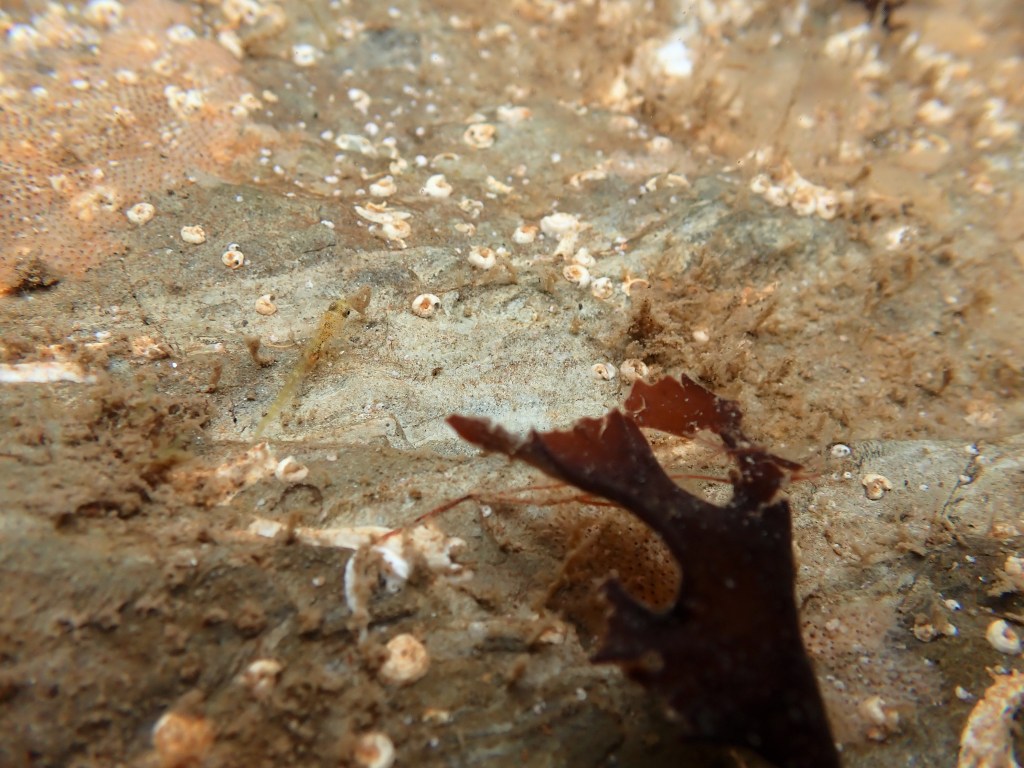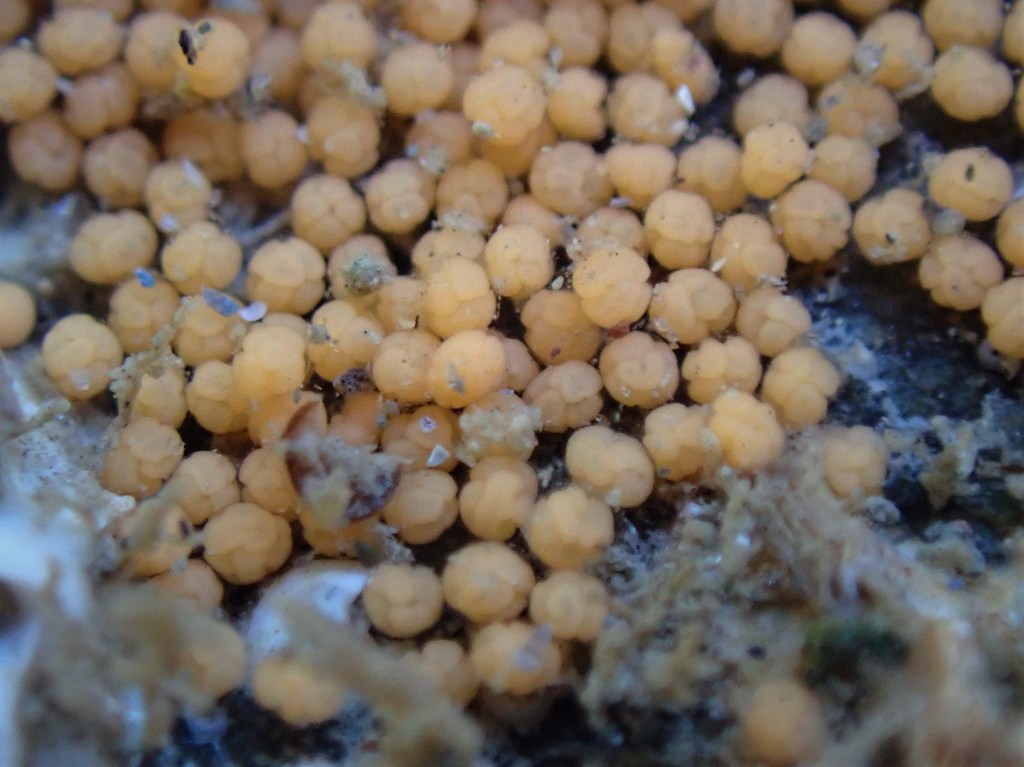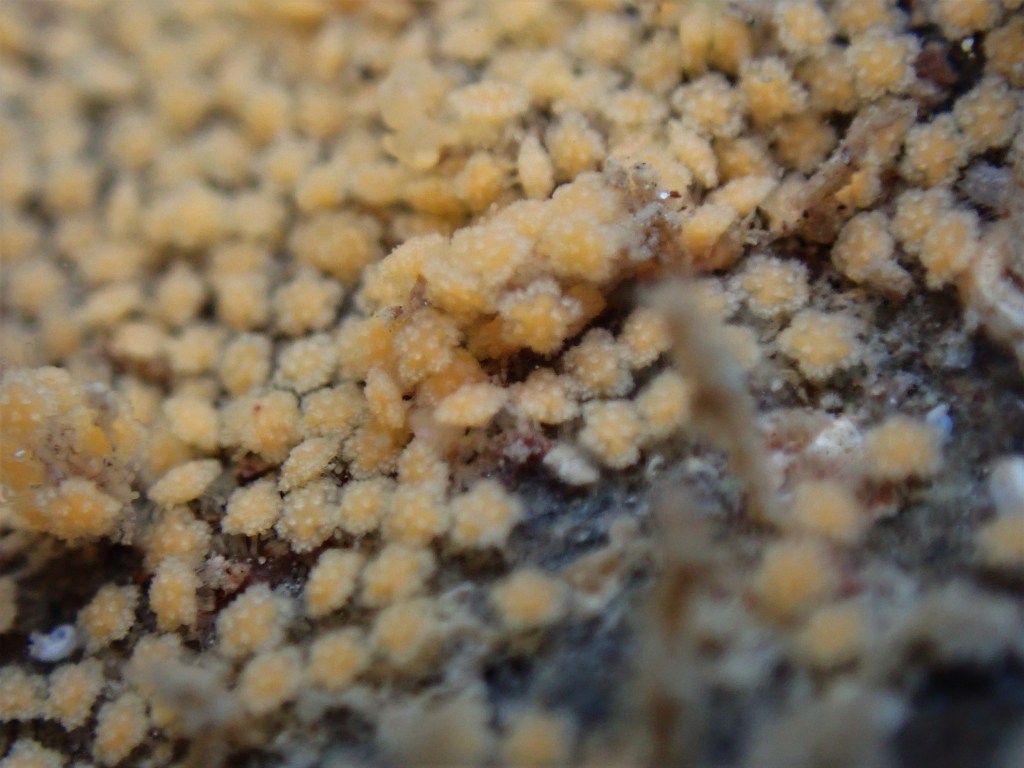The sun is shining, the tide is going out and I’m wearing my ‘new’ blue sunglasses that I found in a rock pool last week. Junior and I are searching for signs of new life on the sheltered shore at Looe. Most of all, we are looking for cushion starfish eggs.
We aren’t the only ones out on the beach. Grey herons, egrets, oystercatchers, great black-backed gulls and crows, many with hungry nestlings to feed, are taking a keen interest in the pools and rocks. We give the birds plenty of space and settle ourselves by a mid-shore pool.
There is always lots going on here. Colonies of light-bulb sea squirts are sprouting up around the rocks, hermit crabs scuttle across the gravel and prawns swim over to see what we are doing – or perhaps to see if we are edible.
Under a rock adorned with a brilliant blue patch of Terpios fugax sponge, a rock goby is lying still, watching me through small eyes.
Another goby close by, its head poking out from under a stone. There is no sign of any rock goby eggs, but as I check the underside of the rock, something glides along its surface.
It’s hard to see what the tiny creature is. It looks as though it is changing colour as it moves, but this is because I am seeing straight through its body to the colours of the algae and sponges. After a few attempts, I manage to zoom in on the baby fish, which rests only for a few seconds at a time before zipping forward in a new direction.
This is probably a baby goby. As the summer goes on, many quiet mid-shore pools will hold large populations of tiny gobies and blennies.
The cushion star Asterina gibbosa is a common rock pool starfish here in Cornwall, easily recognized by its puffy body and short, stiff, arms. These little starfish all start life as males and then become hermaphrodites (with both male and female organs) as they grow.
Unlike many other species of starfish, these cushion stars do not spawn into the plankton but lay a clutch of bright orange eggs. I sometimes find newly-laid eggs several times.
When the eggs are developing, the curled-up legs of a baby starfish can just be seen.
This area of the beach seems to be a popular egg-laying site for the cushion starfish, so today I am hoping to fully developed or just-hatched eggs.
I search the pool, gently lifting a few stones before replacing them exactly as they were. This pool is crowded with St Piran’s and common hermit crabs of all sizes. The high population means that there is competition for shells. One St Piran’s hermit crab is occupying a very battered dog-whelk shell with half of the back missing – it’s better than nothing.
A Xantho hydrophilus crab wanders past me. From the way her tail sticks out a little behind her shell, I can see that she must be carrying eggs. I take a quick look, keeping her in the water and cradling her to keep her eggs safe. The tiny black spots on the eggs show that they are near hatching. Under my camera I can see all the little eyes staring out.

When her eggs are ready to hatch, the crab will release them into the sea, flapping her tail to send them on their way. The baby crabs will swim in the plankton for a while before gradually changing into their final form and settling.
Finally, I come across a small patch of orange cushion star eggs under a rock. I crouch down and put my camera in the water. These eggs look a little different to others I have found. It takes me a moment to realise why: they have hatched!
Instead of eggs, I am looking at hundreds of minuscule orange cushion stars, all very gradually extending their little tube feet and beginning to move and explore.
Most of the cushion starfish babies are still piled up together in a huddle, but some are a few centimetres away from the crowd, already taking their first journey alone in the rock pool.
I am entranced. So much so, that I don’t notice that I am sitting in the water getting a wet bottom while I take photos. I could stay watching this forever, but I want to share it with Junior.
Junior goes through the same process as me, seeing the eggs and taking a few shots on his camera before realising what he is looking at. He’s seen most things in the rock pools by now so it takes something special to impress him. This is something very special.
Cushion stars are lovely; baby cushion stars are pure magic. Once again, the rock pools have exceeded all our expectations. We will never know how things turn out for these particular baby starfish, but we may well meet some of them again as adults on our future visits to our local shore.
If you are visiting the beach this summer, be sure to rock pool responsibly and safely. Check the tides and leave everything as you found it. Read my top tips for successful rock pooling.
This website is a labour of much love and the content is available for free to everyone. My wonderful readers often ask if there is a way to support my work. You can now ‘buy me a coffee’ through my Ko-fi.uk page. (Just click donate and you can set the amount to pay by PayPal). Thank you!















Magical!
With all those eggs, I can’t help wonder why there aren’t more adult cushion stars around? I suspect a lot get eaten?
Thank you so much for brightening my day – again! X
LikeLiked by 1 person
Thank you for your lovely words Trisha. It certainly was incredible to see all those tiny cushion stars. They are very small and vulnerable so I’m sure some are predated or don’t survive for all sorts of reasons, but enough must make it as there are always lots of adult cushion stars on the shore.
LikeLike
Sent from my iPad
>
LikeLike
You have captured some truly amazing moments here. Those young cushion stars are simply incredible.
LikeLiked by 1 person
Thank you! It’s something I’ve been hoping to see for so long. They were even more amazing that I expected. 🙂
LikeLiked by 1 person